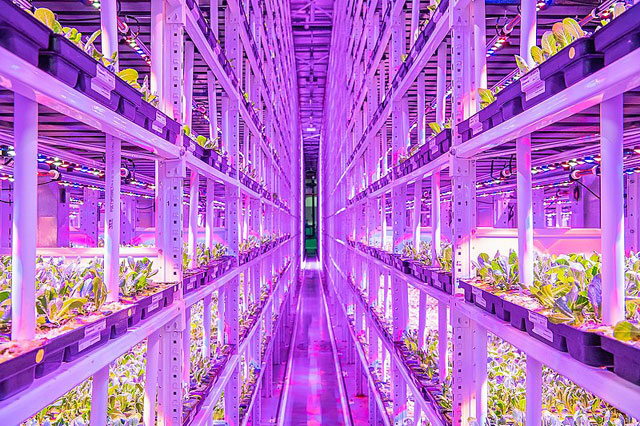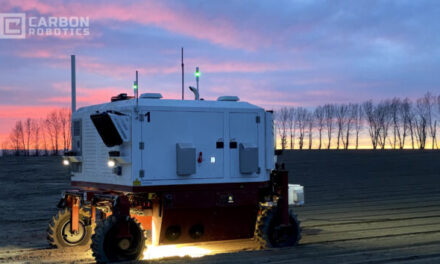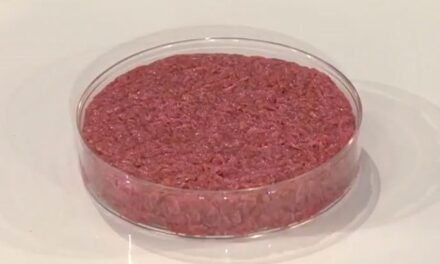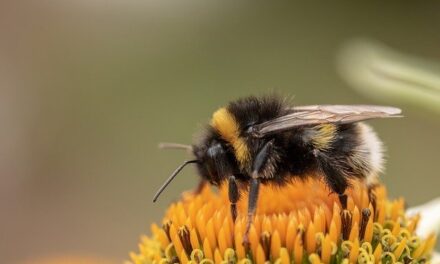Indoor vertical farming has been called the future of agriculture. According to advocates, not only does it have the potential to provide the world with an affordable and resilient food supply, but it can simultaneously address environmental problems such as global water security, habitat preservation, and curbing conventional agriculture’s large greenhouse gas footprint. Nevertheless, this has been a controversial topic, with mixed opinions from experts. Are these claims hyped or can it deliver?
Stuart Oda believes that once you understand the current state of indoor vertical farming, and the potential of future technology trends, its hard to argue against its long-term viability. Absolute yield continues to trend higher thanks to greater and greater efficiencies. Furthermore, investment and operational costs continue to trend downward. And while there is no single point in time when this technology becomes economically viable to grow everything, eventually, even energy intensive crops should cross the threshold into economic viability.
Stuart Oda – an investment banker turned urban farmer, he is the founder of Alesca Life, an ag-tech company that builds indoor vertical farms and farm management software to make food production more localized and data driven.
Indoor Vertical Farms – Introduction
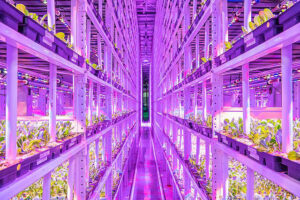 Often called controlled environment agriculture, indoor vertical farms are air-tight, weather-proof, highly climate controlled buildings with a CO2 enriched atmosphere. They are sealed and thermally insulated with no windows, relying on artificial lighting. They grow crops three-dimensionally in vertical racks, as opposed to the two dimensions of conventional farms. They are aeroponic (where roots are sprayed with a nutrient-rich water solution) or hydroponic, which means that instead of using soil, they use a substitute material like polyurethane sponges, biodegradable peat moss, or inorganic materials like perlite and clay pellets. Another unique aspect of indoor vertical farms, is they use a precise nutrient formula that is circulated and recycled throughout the facility. It is pumped directly to the vegetables’ root zone to promote plant growth. Transpired water vapor from the plants is captured, condensed and recycled back into the system. And finally, these farms use a sophisticated monitoring and automation system to significantly increase productivity, efficiency and consistency.
Often called controlled environment agriculture, indoor vertical farms are air-tight, weather-proof, highly climate controlled buildings with a CO2 enriched atmosphere. They are sealed and thermally insulated with no windows, relying on artificial lighting. They grow crops three-dimensionally in vertical racks, as opposed to the two dimensions of conventional farms. They are aeroponic (where roots are sprayed with a nutrient-rich water solution) or hydroponic, which means that instead of using soil, they use a substitute material like polyurethane sponges, biodegradable peat moss, or inorganic materials like perlite and clay pellets. Another unique aspect of indoor vertical farms, is they use a precise nutrient formula that is circulated and recycled throughout the facility. It is pumped directly to the vegetables’ root zone to promote plant growth. Transpired water vapor from the plants is captured, condensed and recycled back into the system. And finally, these farms use a sophisticated monitoring and automation system to significantly increase productivity, efficiency and consistency.
Advantages Of Indoor Vertical Farming
Any Crop, Anywhere
They have a high level of control and growing conditions, so they can grow any type of plant, in any region of the world.
Reliable, Consistent Harvests
They have year-round crop production with consistent quality and predictable output. They are not exposed to bad weather or failed harvests. This gives them the potential to have the greatest impact on famine and volatility in food prices.
Water Advantage
Indoor vertical farms offer superior water savings versus conventional agricultural practices. For example, in the best vertical farms, 1 kg of lettuce requires 1.2 liters of water. This is impressive considering lettuce is 95% water. As a comparison, 1.2 liters is 17 times better than a normal hydroponic greenhouse. And in stark contrast, field grown lettuce requires a staggering 237 liters per kg of lettuce. That’s 200 times more water! The water saved has the potential for a huge positive impact on water security and reversing the disappearance of wetland ecosystems.
No Pesticides Or Fertilizer Runoff
Indoor vertical farms don’t need pesticides. They require little fertilizer, and don’t have uncontrolled agricultural runoff. These factors combined, are great news of freshwater habitats.
Located In And Around Urban Centers
Since indoor vertical farms can be built near population centers, they allow for lower carbon emissions due to a reduction in food transport. Shortening the agricultural supply chain also helps to maintain freshness and the nutritional content in produce. Furthermore, there are food deserts in many countries that have little to no access to nutritious vegetables, so as this industry matures, it will become possible to provide more equitable access to high-quality, highly nutritious vegetables, even in the most underprivileged of communities.
Productive Use Of Underutilized Infrastructure
Indoor vertical farming can be integrated seamlessly into the urban landscape, helping to repurpose idle, underutilized and unused urban infrastructure. And this isn’t just limited to large-scale civil engineering projects. Smaller spaces like the growing number of vacant commercial properties, can also be repurposed to grow fresh affordable produce.
Potential To Return Farmland To Natural Habitat
Returning farmland to forests, shurblands and grasslands will be a massive benefit for wildlife conservation efforts, and also has promise for significant global carbon sequestration. But how much land can it save? This technology has a vastly greater yield for a given area. A cutting edge indoor vertical farm, for example, has a growing density over 100 times greater than conventional agriculture. This has enormous potential for reversing deforestation and habitat loss.
Skepticism Surrounding Indoor Vertical Farms
Even though indoor vertical farming has a number of advantages over conventional agriculture, many are skeptical about its widespread adoption due to the high operational costs and energy requirements. Some of the biggest criticisms surrounding the viability of indoor vertical farms include: high upfront costs, high maintenance costs, high depreciation costs, high labor costs, and high cost of pollination. And while there’s a downward trend in these input costs thanks to accelerating technological innovation, there is still one giant hurdle to overcome in order for indoor vertical farms to truly disrupt conventional agriculture. This is the energy-intensive nature of artificial lighting.
Indoor vertical farms trade energy for benefits like density and control. Its how they achieve massive yield for a small area of land. Artificial lighting, therefore, accounts for 80% of a vertical farms energy costs. And based on today’s cost of electricity and the current global energy mix, most of that energy is prohibitively expensive and requires carbon emissions to produce.
Validity of Skepticism
Presently, operating costs can be quite high from an energy perspective. Plants need light energy to grow. In a field, the sun provides the energy for free. In an indoor vertical farm, it must be supplied. As such, energy is the major constraint for indoor vertical farms and the overwhelming factor that dictates what plants can be grown.
Thus far, due to energy constraints, only a small percentage of agricultural products can be grown profitably in indoor vertical farms. Those with a high percentage of edible mass, like leafy greens, fit into this category. They require much less light to grow when compared to a staple crop such as rice, which has a much lower edible mass percentage. Growing rice using artificial lighting, for example, requires approximately 30 times more energy than lettuce. This means rice grown in a vertical farm using current technology, would produce extremely expensive rice and have a significant energy demand.
Therefore, rather than judging indoor vertical farming’s validity on a whole, its more reasonable to break crops into 3 broad categories based on their approximate energy requirements. Then we can better determine the economics of each category individually.
- Category 1 – Leafy Greens & Herbs
- Category 2 – Vegetables, Roots, Pulses (beans, lentils, peas), Ground Fruits
- require 2.5 times more energy per kg than leafy greens
- Category 3 – Staple Crops, Nuts, Tree Fruits
- require 30 times more energy per kg than leafy greens
Currently, only Category 1 crops – Leafy Greens & Herbs – can be grown economically. While we are already seeing the emergence of Category 2 crops (such as cucumbers, tomatoes, and strawberries), profits on non-premium products are still very slim. Finally, Category 3 staple crops are prohibitively expensive due to energy constraints. They require significantly improved energy efficiency and reduced input costs to be economical.
Improving Energy Efficiency – Increasing Absolute Yield
Given the huge potential of growing Category 2 and Category 3 crops in indoor vertical farms, its essential to reduce their energy constraint. Without a dramatic reduction in energy consumption, Category 2, and Category 3 in particular, can not be realized.
So how do we reduce the energy consumption of vertical farms? To do so, we must increase the farm’s absolute yield (edible kg per surface area/year), which leads to higher energy efficiency.
This is done in a number of ways…
- grow faster – increase yield by attaining more harvests per year.
- increase density – grow plants closer together on a horizontal dimension.
- increase edible mass per plant – achieved by growing higher percent of edible mass per plant, or by growing larger plants.
As such, improvements in absolute yield are vital for indoor vertical farms. The higher the kilograms of edible mass per watts, the higher the energy efficiency, and the wider variety of crops that can be grown profitably.
Positive Long-Term Trend in Energy Efficiency & Input Costs
Luckily, rapid advancements in technology are leading to greater and greater energy efficiency and lower and lower input costs. Thanks to technological advances, indoor vertical farms continue to increase kilograms of edible mass per watt of light, while advancements in renewable energy are simultaneously reducing the dollar per watt of electricity. Same can be said for rapidly decreasing capital, labor, operating, and depreciation costs.
The more one looks at the synergy of technological advances – across multiple disciplines – the less skepticism one has about the viability of indoor vertical farming. Most critics appear to overlook the extreme technological progress and how it can affect this industry.
Some of the key trends in energy efficiency and input costs are as follows…
Genetic Engineering & Bioinformatics
A number of plants are poorly suited for indoor vertical farms. Either they have a low edible mass percentage, or they’re ill suited to aeroponic or hydroponics, or they are too tall. Since current commercial outdoor crops have no need to consider these parameters, we breed plant varieties that thrive outdoors. Additionally, many current crops are bred to sacrifice yield for vital pest and disease resistance – qualities unnecessary in the sealed environment of vertical farms.
Indoor vertical farms have different priorities and require different plant types as a result. Thanks to advancements in genetic engineering and bioinformatics, we can develop plant varieties optimized for short heights, hydroponics and high edible mass percentage. As gene editing techniques become cheaper and easier to implement, the yield improvements alone, should significantly reduce the energy requirements for future crop types.
Better, Faster Experiments
Another reason why yield improvements are happening so rapidly, is in part due to new possibilities in data analysis. Since plant growth is so complex and affected by many parameters, there is still a considerable amount of work to be undertaken to understand the optimal conditions for each specific crop. Vertical farms, therefore, have multiple sensors measuring many parameters – from temperature, to humidity, to atmospheric CO2, to the water’s pH level, to nutrient levels, to specific light recipes tailored to each crop. The plants are analyzed with cameras and sensors which monitor plant health in real time.
Because indoor vertical farms control the environment so effectively, its considerably easier to run experiments and interpret data, which helps maximize yield by the fine tuning of variables. And thanks to considerably more frequent harvests per year, indoor vertical farms have a lot more opportunities to experiment, collect data, and learn. This allows for a learning rate that is an order of magnitude higher than other growing methods.
Indoor vertical farms are hiring data engineers and sensor specialists as a significant percentage of their workforce. In addition, artificial intelligence (AI) already plays a key role in many vertical farm operations. And despite this, we are still at the very early stages of data collection and analysis. As sensors continue to get cheaper and more capable, and as AI continues to advance, the efficiencies of indoor vertical farms will increase considerably.
Improvements In LED Lighting
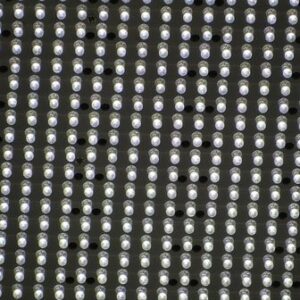 In the last few years, LED lights have improved considerably. Special units are being developed specifically for the indoor growing and their efficiency is anticipated to improve by 50% in the next decade. Efficient lights run colder. Not only does this save energy, but allows them to be placed closer to the plant without risking heat damage. This allows indoor vertical farms to fit more levels into a fixed building height, increasing footprint yield. Closer positioning increases light penetration into the canopy, allowing plants to be grown closer together for increased absolute yield. This also reduces light bleed and increases light absorption efficiency, reducing energy requirements. Greater use of reflective bay materials, deeper penetrating green wavelength light, and mid-level bay lighting can further reduce the total energy requirements.
In the last few years, LED lights have improved considerably. Special units are being developed specifically for the indoor growing and their efficiency is anticipated to improve by 50% in the next decade. Efficient lights run colder. Not only does this save energy, but allows them to be placed closer to the plant without risking heat damage. This allows indoor vertical farms to fit more levels into a fixed building height, increasing footprint yield. Closer positioning increases light penetration into the canopy, allowing plants to be grown closer together for increased absolute yield. This also reduces light bleed and increases light absorption efficiency, reducing energy requirements. Greater use of reflective bay materials, deeper penetrating green wavelength light, and mid-level bay lighting can further reduce the total energy requirements.
And in addition to LED light efficiencies, LEDs are increasingly capable of delivering a broader spectrum of light, allowing for greater control yields. The cost of the units are also falling quickly, while the unit lifespan continues to improve. This will reduce the capital and depreciation costs for future indoor vertical farms, which is essential for improving their cost competitiveness.
Introduction Of Robotics
Robotics are being introduced in large-scale facilities in order to reduce the high labor costs common in the agriculture industry.
Introduction Of Fiber-Optics
There are efforts to use fiber-optic cables to channel sunlight directly into an indoor vertical farm during the day to reduce the need for artificial lighting.
Cheaper Electricity
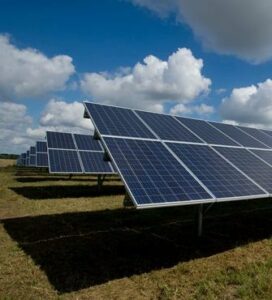 Perhaps the single biggest technological trend that could appreciably transform the economic viability of indoor vertical farms, is renewable energy. It has the potential to solve the economic and environmental prospects simultaneously. Solar, for instance, is projected to halve its cost over the next decade. This will bring indoor vertical farms’ cost below conventional agriculture in many parts of the world. Reducing the cost of electricity will be the final step, enabling vertical farms to grow a broader range of products.
Perhaps the single biggest technological trend that could appreciably transform the economic viability of indoor vertical farms, is renewable energy. It has the potential to solve the economic and environmental prospects simultaneously. Solar, for instance, is projected to halve its cost over the next decade. This will bring indoor vertical farms’ cost below conventional agriculture in many parts of the world. Reducing the cost of electricity will be the final step, enabling vertical farms to grow a broader range of products.
Indoor Vertical Farming Today – Leafy Greens & Herbs
Indoor vertical farming today, focuses almost exclusively on Leafy Greens and Herbs. Due to the high energy inputs of indoor vertical farming, to be economically viable, plants grown in vertical farms ideally need the following characteristics.
- high edible mass percentage
- low plant height
- fast growing cycles
- short shelf life
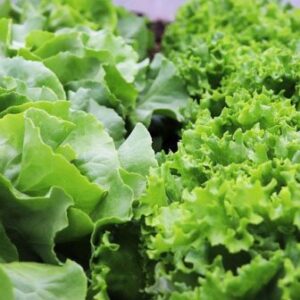 Leafy Greens and Herbs conform to all these characteristics. So not only do growing efficiencies (1, 2 & 3) make leafy greens cost competitive on an energy basis, but the short shelf life (4) allows producers to focus on the premium end of the market. Indoor vertical farms are not only capable of delivering the highest quality produce, but their proximity to the consumer ensures a fresh product with minimal nutrient loss. This “premium” component allows new indoor vertical farms to operate profitably, up until economies of scale and progressively decreasing input costs allow them to compete on price in the broader market.
Leafy Greens and Herbs conform to all these characteristics. So not only do growing efficiencies (1, 2 & 3) make leafy greens cost competitive on an energy basis, but the short shelf life (4) allows producers to focus on the premium end of the market. Indoor vertical farms are not only capable of delivering the highest quality produce, but their proximity to the consumer ensures a fresh product with minimal nutrient loss. This “premium” component allows new indoor vertical farms to operate profitably, up until economies of scale and progressively decreasing input costs allow them to compete on price in the broader market.
So thanks to efficiencies and high margins for leafy greens, indoor vertical farms are already operating profitably around the world. Some of them are massive in scale, capable of producing tens of thousands of heads of lettuce per day.
Mid-Term Outlook (5 To 10 Years) – Vegetables, Roots, Pulses & Ground Fruits
Category 2 crops (Vegetables, Roots, Pulses and Ground Fruits) are the next step in the evolution of indoor vertical farming. While leafy green crops are already cost competitive in many parts of the world, Category 2 crops still need to scale due to their more demanding energy requirements. Such crops require (on average), 2.5 times the energy of leafy greens.
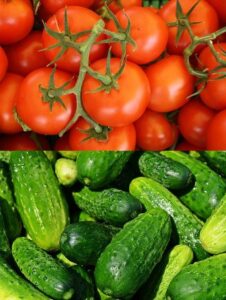 Though we are already seeing the emergence of Phase 2 crops such as cucumbers, tomatoes, and strawberries, profits on non-premium products are still slim at best. But, in the foreseeable future, we should see rapid yield improvements for Category 2 crops. The same steps that helped leafy greens approach their limits in edible mass percentage and speed up growing cycles, are now being implemented for vegetables, roots, pulses and ground fruits. Breeding genetically optimized Category 2 crops, specifically for indoor vertical farms, is still in its infancy. As is the knowledge of optimal growing parameters (temperature, humidity, atmospheric CO2, water pH levels, nutrient levels, specific light recipes, etc.). Progress is happening so rapidly, that the energy requirements – thanks to improved absolute yield – should fall within reasonable levels in the not-so-distant future.
Though we are already seeing the emergence of Phase 2 crops such as cucumbers, tomatoes, and strawberries, profits on non-premium products are still slim at best. But, in the foreseeable future, we should see rapid yield improvements for Category 2 crops. The same steps that helped leafy greens approach their limits in edible mass percentage and speed up growing cycles, are now being implemented for vegetables, roots, pulses and ground fruits. Breeding genetically optimized Category 2 crops, specifically for indoor vertical farms, is still in its infancy. As is the knowledge of optimal growing parameters (temperature, humidity, atmospheric CO2, water pH levels, nutrient levels, specific light recipes, etc.). Progress is happening so rapidly, that the energy requirements – thanks to improved absolute yield – should fall within reasonable levels in the not-so-distant future.
Combine this with the trajectory of falling input costs (electricity, capital, depreciation and labor) due to rapid technological advancement, and Phase 2 crops should become as ubiquitous as Leafy Greens in another 5 to 10 years.
Long-Term Outlook (10 to 20 Years) – Staple Crops, Nuts & Fruit Trees
There are many skeptics that dispute the viability of growing Category 3 Staple Crops, Nuts, and Tree Fruits in indoor vertical farms. They argue that the thirtyfold energy requirement for Category 3 crops versus Category 1 Leafy Greens, is an insurmountable obstacle. Furthermore, current production of staple crops already benefit from a massive economy of scale and have small profit margins. Growing Category 3 crops in indoor vertical farms they say, “just can’t be done”.
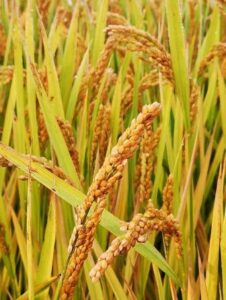 But technology isn’t static. Current Category 1 crops are only profitable today because of significant improvements of the last few years. So if we factor in technological progress, will we be able to close the energy gap? Will indoor vertical farms be able to economically grow Phase 3 crops in 10 to 20 years?
But technology isn’t static. Current Category 1 crops are only profitable today because of significant improvements of the last few years. So if we factor in technological progress, will we be able to close the energy gap? Will indoor vertical farms be able to economically grow Phase 3 crops in 10 to 20 years?
For Category 1 and 2, there is a premium “freshness advantage” in placing production close to consumption. But for Category 3 Staple Crops, this is much less important. Staple crops and nuts can be produced anywhere and shipped anywhere without a freshness penalty. This mean such farms can be placed in regions with cheap electricity. Since many staple crops and nuts can be stored indefinitely, they can be transported by boats and trains, helping keep the transport emissions very low.
Relocating farms to take advantage of energy savings is just one strategy for growing Category 3 crops economically. Other approaches will need to concentrate on increasing absolute yield for a fixed energy input. To start with, a much denser crop needs to be used. Field grown staple crops typically grow tall. Indoor vertical farms will need to use dwarf variants. Optimizing for C02 levels, pH levels, nutrient levels and light recipe, will also increase yield and shrink cultivation period, translating into significant energy savings.
In addition, a significant cost reduction will come from solar. From now until 2030, the cost of solar is predicted to fall by 56%. So what happens when we stack absolute yield, LED lighting, and solar improvement together? This creates a powerful multiplier. In this respect, its likely that we’ll see Category 3 Staple Crops grown in vertical farms become price competitive with conventional agriculture within 10 to 20 years.
Another Exciting Facet of Vertical Farming – Livestock Feed
Indoor vertical farming for human consumption gets most of the attention, but there’s another exciting side of indoor vertical farms. While human consumption accounts for 55% of crops grown, and 9% for biofuel, 36% of agricultural crops are grown for animal feed.
Meat takes an enormous amount of water to produce, as crops grown for animal feed require a lot of water. Producing 1 kg of beef, for example, requires 7 kg of crops. This makes meat production extremely water inefficient. And its not just water. Meat production is also very land inefficient. Approximately 70% of all agricultural land is considered grazing land. So if we really want to return a significant amount of global land back to the forest, we will need to substitute meadows for an alternative animal feed source.
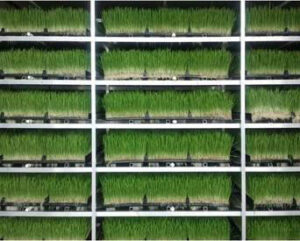 Currently crops such as hay and soy are used for livestock feed. They are land intensive to grow. Both are also highly water intensive Phase 3 Staple Crops that are at least 10 years away from growing economically in indoor vertical farms. The good news, however, is another crop – sprouted barley fodder – can supplement a significant percentage of livestock feed. It can already be grown economically in indoor vertical farms with minimal labor, water, and electricity costs. As worldwide businesses start to adopt sprouted barley fodder as an alternative livestock feed, we should start to see a positive impact on global land and water challenges sooner than later.
Currently crops such as hay and soy are used for livestock feed. They are land intensive to grow. Both are also highly water intensive Phase 3 Staple Crops that are at least 10 years away from growing economically in indoor vertical farms. The good news, however, is another crop – sprouted barley fodder – can supplement a significant percentage of livestock feed. It can already be grown economically in indoor vertical farms with minimal labor, water, and electricity costs. As worldwide businesses start to adopt sprouted barley fodder as an alternative livestock feed, we should start to see a positive impact on global land and water challenges sooner than later.
Conclusion
So what will agriculture look like in the long-term, say in another 20 years? Thanks to rapid advancements in indoor vertical farming, we are looking at a world with a highly resilient food production system that scales easily to produce more food, and not be vulnerable to climate, flooding and pest damage. Food prices will continue to fall as technological innovation advances, making food less expensive than its ever been before. And while its not the only change required to eliminate world hunger, it will help considerably.
In terms of its environmental impact, indoor vertical farming will drastically reduce agriculture’s fresh water consumption, positively impacting global water security and fresh water ecosystems. We may be able to halt and reverse desertification and deforestation, and drastically reduce most of agriculture’s large greenhouse gas footprint. We could help further reduce C02 by reforesting the land we are able to displace.
Indoor Vertical Farming – Investing For The Long-Term Trend
Thanks to rapid technological improvements, an ever expanding knowledge base, a scaling to larger and larger farms, and a decreasing cost of energy, year on year yields for indoor vertical farms continue to trend up, while input costs continue to trend down. Its no surprise, therefore, that vertical farms are starting to attract some serious investment dollars. Just in the last few years, indoor vertical farming startups like Plenty, AeroFarms, Bowery Farming, Iron Ox, and InFarm, have raised hundreds of millions of dollars in equity and debt to grow their vertical farming networks. If one simply “follows the money”, now seems like a good time to start exploring the different ways to invest in this sector.
But where are the opportunities?
While most of the aforementioned vertical farming operations are privately-owned companies, there is still ample opportunity to invest in this trend outside of big venture capital. One way is invest in smaller startups via equity crowdfunding. Another is to invest in publicly traded companies developing technologies in the indoor vertical farming space. Some of these varied technologies include: LED lighting, gene editing, robotics, data analytics, Artificial Intelligence (AI), plus providers of analytical instruments and water irrigation systems.
Small Startups
Equity crowdfunding gives investors the opportunity to invest in small startups associated with vertical farming. While direct investment in actual farm operations are limited, companies developing products and services in the space are more common. If you’re curious, periodically check either of the two big equity crowdfunding platforms, StartEngine and Wefunder. Interesting startups related to indoor vertical farming do appear from time to time.
Publicly Traded Companies
With respect to publicly traded companies, vertical farming startups are – as of yet – unlisted. That said, there are still a number of ways to play the long-term trend. We’re keeping any eye on 8 companies that develop technologies utilized in indoor vertical farming.
Plant Genomics
LED Lighting Companies

